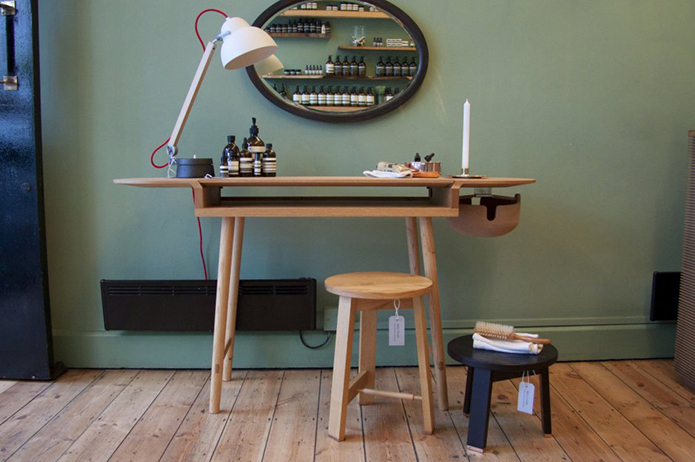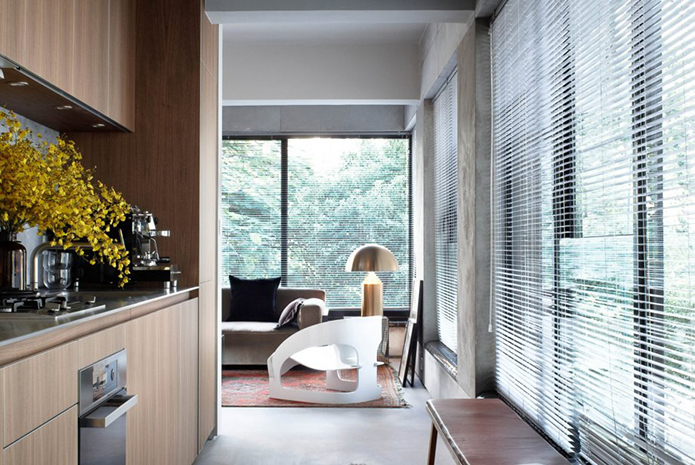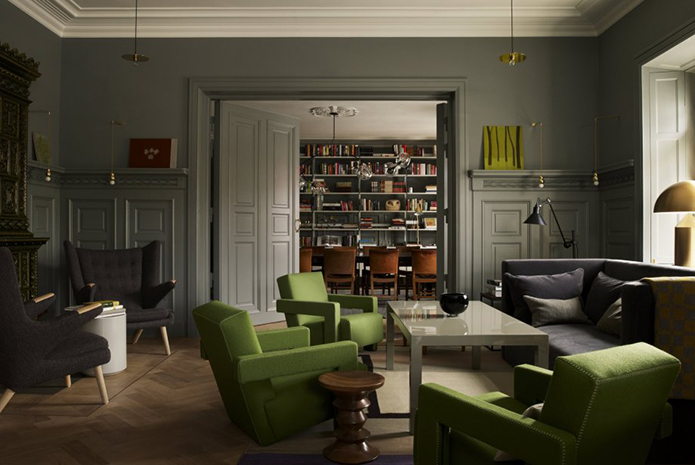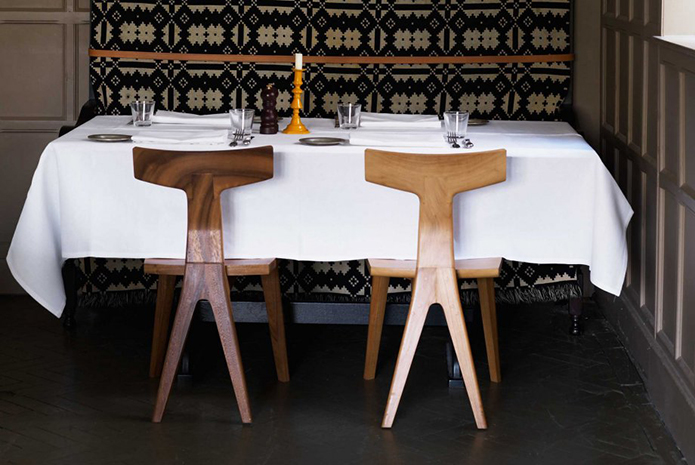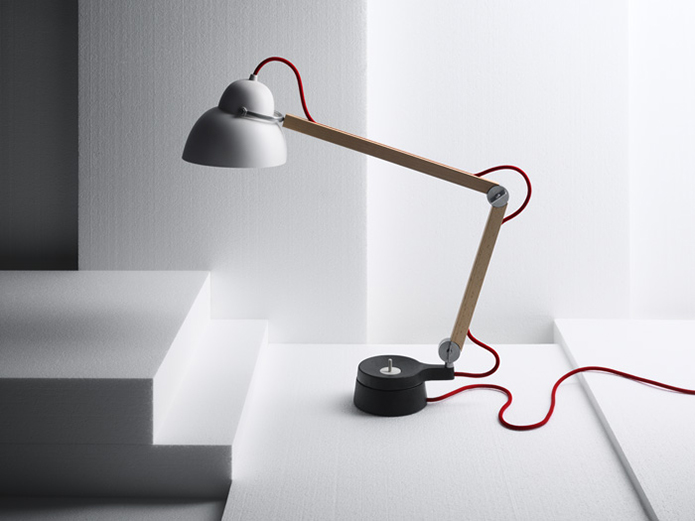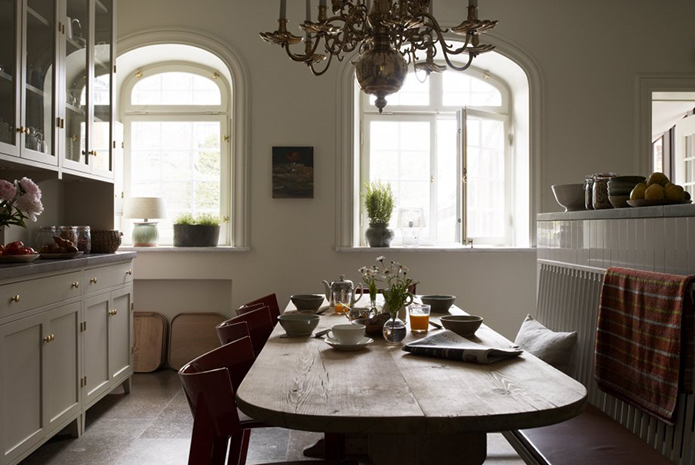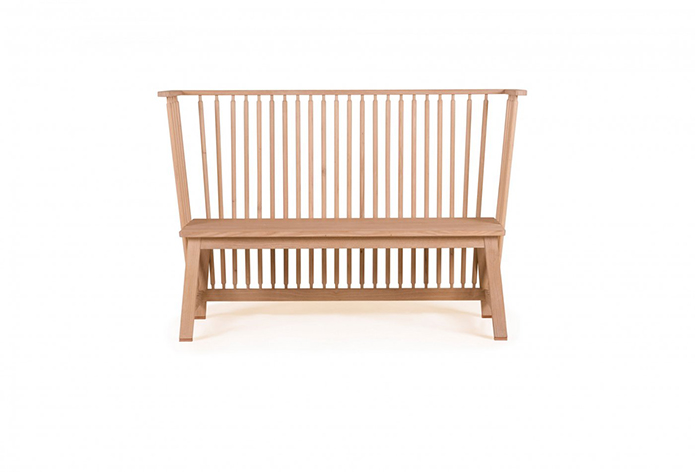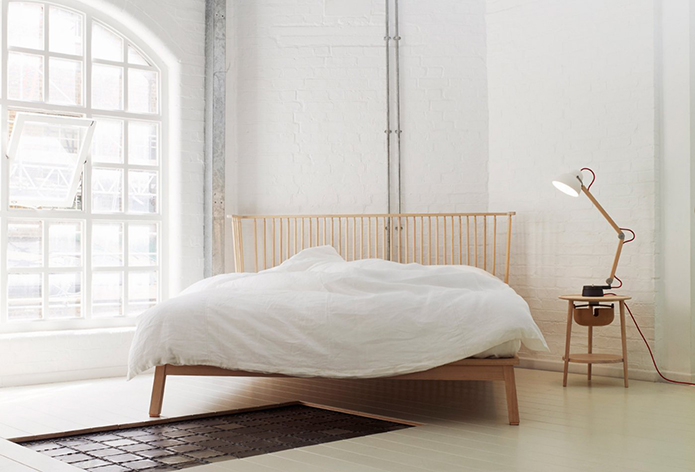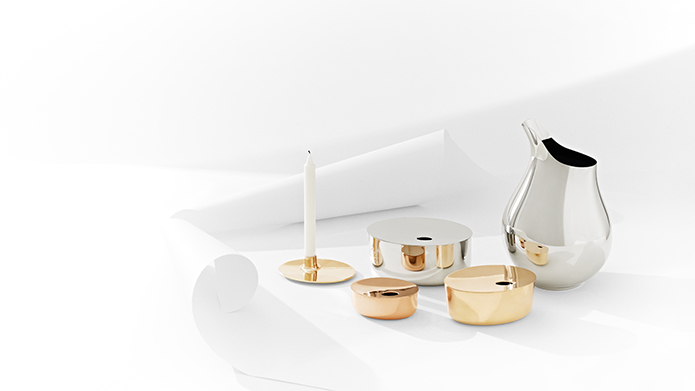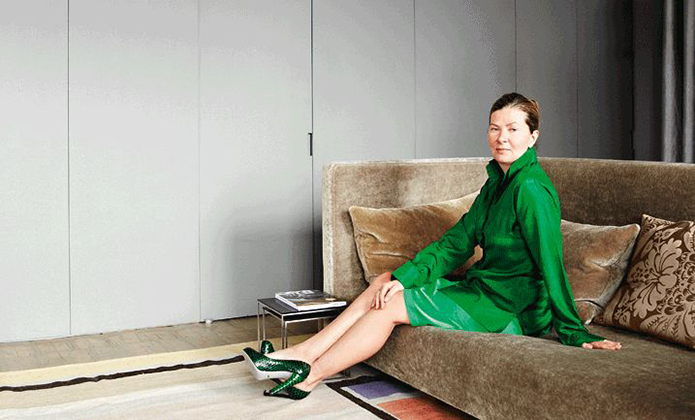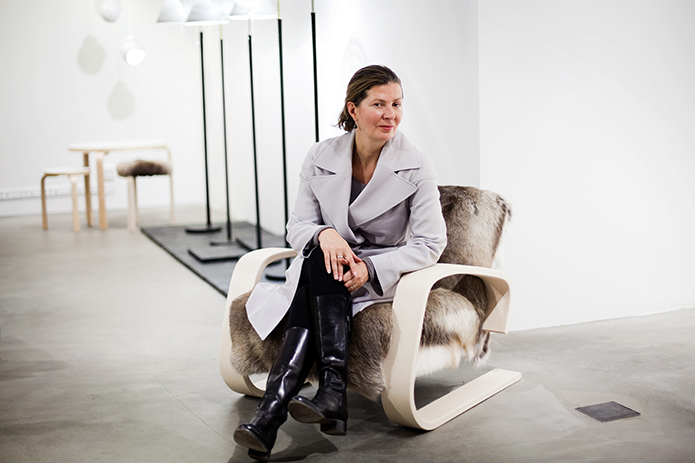
Ilse Crawford on her version of the Armchair 400 for Artek. Image © Artek.
Ilse Crawford, the prominent, celebrated and successful British designer, can sometimes appear stern and somewhat unapproachable in pictures. Yet having had the privilege to meet her at a launch party for her Georg Jensen collection, this perception was quickly rendered invalid. Ilse was quite simply a warm and charming woman. Given that her work focuses on the human, behaviour and emotion, her harmonious character was certainly reassuring.
Ilse Crawford’s design journey began when she was a child. In an interview with the South China Morning Post, she reflects: “I would walk around with my mum adding character touches to the rooms. I’ve always been conscious of how buildings change behaviour. Some spaces make people relaxed, others make them more mechanical.” Crawford is an advocate for positive and constructive human environments, both physically and emotionally. She recognises the influence a person’s environment can have upon them with respect to their happiness, health and wellbeing. As such, many of Crawford’s projects nurture physical surroundings and space, ensuring they connect favourably with people.
Ilse Crawford was born in London in 1962. She lived her formative years in Notting Hill, near Portobello Road, then a much different locale to the one it has become today. Her mother was Danish, an artist and pianist; her father was the economics editor at the Sunday Times. Such a dichotomy must have in someway influenced Crawford’s more balanced view of life. The young Ilse attended state-run schools and later in her childhood she moved with her mother, father, younger brother and triplet sisters, to a shabby ex-vicarage in Kent. Its rambling rooms and hallways would eventually inspire some of her work. Aged eleven, Ilse attained a place at a girl’s grammar school in Tunbridge Wells. The story goes that she would finish her homework in the school library each day and then read Vogue. Sadly, when Ilse was just eighteen, her mother died after a long illness. Rather than a planned period of study at York University, she needed to help at home with her siblings. Ilse enrolled at Bedford College (now Royal Holloway) in London to read history.
Ilse Crawford worked her way through a series of jobs, including a sub-editor at the Architect’s Journal, before moving onto World of Interiors. In 1989, aged 27, she launched British Elle Decoration, a magazine that had a significant impact on the British design scene at that time and continues to thrive almost 25 years later. In editing and curating the magazine, Crawford had to fight her corner for several important additions, including the use of images that featured both clutter (which she viewed as truer to life) and people. Crawford left Elle Deco in 1998, moving to work for Donna Karan in New York, a position she ultimately felt was too corporate.
Ilse Crawford established her eponymous design studio, Studioilse, a decade ago. Since then, the studio’s reputation has grown considerably, completing projects that encompass the fields of interior architecture, interior design, brand identity and product design. Studioilse’s portfolio includes: the residential development TwoTwoSix in Hong Kong; Ett Hem Hotel in the Östermalm district of Stockholm; The Olde Bell Inn in Berkshire and a Studioilse lighting collection for Swedish brand wästberg. Crawford is also head of department for Man and Wellbeing at Design Academy Eindhoven in Holland (regarded by many as the best design school in the world).
Ilse Crawford’s design is instilled with and breathes emotional values. Her focus tends more towards people and life than style per se. In a New York Times interview, Crawford remarked: “When I look at making spaces, I don’t just look at the visual. I’m much more interested in the sensory thing, in thinking about it from the human context, the primal perspective, the thing that touches you.” People are central to her design philosophy and thus how she approaches any project. Harmony and balance are key ingredients found across the many projects laboured over by Studioilse.
Crawford and her team will ponder how a space is occupied by an individual or with several people. She believes that in order to dwell within a space it needs a sense of home. A place should have soul, being metaphorically akin to an embrace. Humans are emotional and intelligent beings and as such need to connect with spaces. Crawford sees the functional as significant, but it is not the driver in her thinking on design. Crawford’s work encompasses life elements such as warmth, food, tactility, adaptability and emotion. She observes: “It’s important that a space works with people, that it’s flexible. I don’t like spaces that are so perfect that you can’t adapt them” (Source: South China Morning Post). Her work, no doubt influenced by her Danish mother, is congruous with many of the traditions and values of Nordic design, with its strength of personality and integrity, appearing effortless and with a clear expression of form.
Of the home, Crawford believes “we can reorganize (sic) our homes to enhance our lives, to give us freedom, rather than restrict ourselves in sterile design statements… a wholehearted home frames the complex patterns of daily life, while leaving room for the individual” (from home is where the heart is? by Ilse Crawford). With Studioilse’s Ett Hem Hotel project, Ett Hem meaning “a home” in Swedish, guests are welcomed as a part of the house where they can, to all intents and purposes, treat the space as their home, helping themselves to the fridge for example. This concept may not work for everyone, but Crawford’s approach was to “think carefully about spaces – what we wanted to happen there, how they could be used, how people might feel, what they might want. Everything needs to be incredibly functional – but we don’t ever want it to look like that” (from an interview in Monocle, June 2012, issue 54).
Ilse Crawford’s work is as much about bringing people together as it is about nurturing the individual. Her designs strive to affect people at a human level, to impact positively on their very being. Studioilse describes what it does as ‘a frame for life’. ‘Settle’ for example is part of Studioilse’s ‘Seating for Eating collective’ and the ‘Companions’ family of furniture is designed to support daily life. Both are manufactured with De La Espada.
Ilse Crawford’s range of beautiful everyday items for Danish brand Georg Jensen is testament to her belief that emotion and tactility are vital to design. The range includes vases, boxes, a candleholder and bowls that are made with honest materials such as brass, copper and steel, so engendering feelings of warmth and passion. Georg Jensen’s values include integrity and authenticity, standards which are key within Ilse Crawford’s work. Holding or caressing one of Crawford’s design objects for Georg Jensen is a sensual experience. The pieces are deliberately tactile and designed to nourish the senses.
In associating Crawford’s work with that of Nordic design, it does have a sense of hygge. “It’s that idea that you can bring people together, that space is a dynamic sociable thing” (from an interview with Crawford in onoffice magazine). And this concept perhaps best describes Ilse Crawford’s design wisdom.
Several of the facts on Ilse Crawford’s early life were obtained from an interview with The Observer, 3 July 2005.
Gerard McGuickin is a freelance design writer and a blogger for his online zine, Walnut Grey Design. He writes intelligently about ‘good design’ from the viewpoint of interiors, architecture, objects and lifestyle. Gerard has a specialist interest in modern contemporary Nordic and British design.

